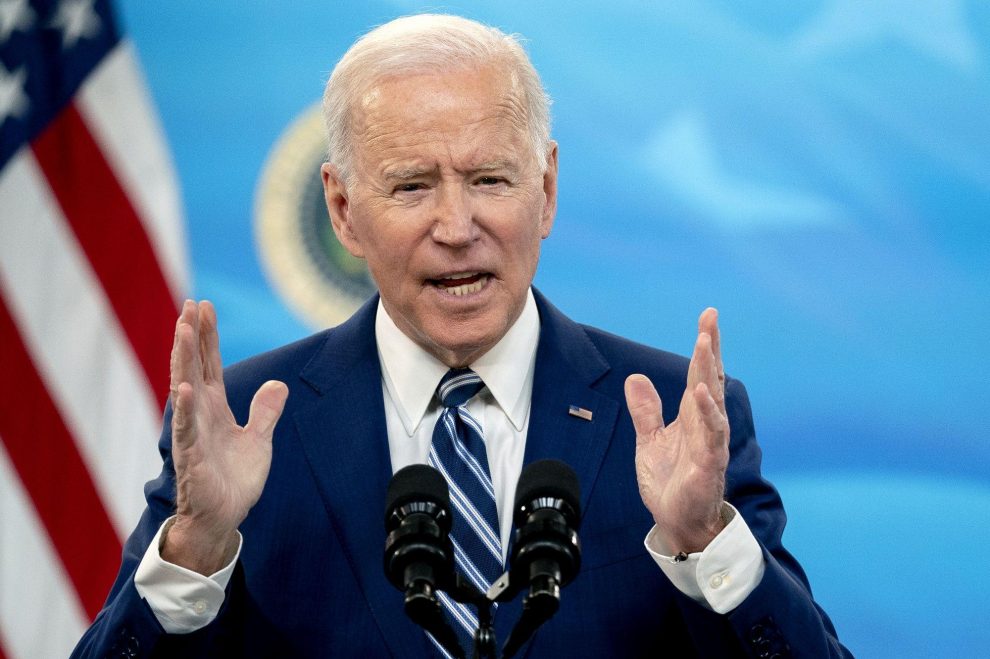As it turns out, a huge chunk of President Joe Biden’s infrastructure plan doesn’t have much to do with infrastructure.
This is not much of a surprise, given that Biden’s pandemic recovery bill had almost nothing to do with the pandemic. But in some ways, it also misses the larger point. Even many of the parts of the bill that are nominally about actual physical infrastructure aren’t really about infrastructure. They’re about shoveling money in the direction of Democratic political allies—mostly unions. And that explains a lot of the rest of the bill, too.
Republicans have been circulating a talking point about how only 7 percent of the $2.25 trillion proposal is actually related to infrastructure. This is somewhat ungenerous, as it only counts a narrow category of spending on roads, bridges, waterways, ports, and airports.
But even a quite generous accounting still suggests that only a little more than half of the bill is targeted at anything that meets the definition of infrastructure, and that includes projects like $111 billion for drinking water and $328 billion for upgrading military health facilities and other federal buildings. As Politico notes, those sorts of projects involve some amount of physical building and construction but have never been previously categorized as infrastructure.
The plan also includes a lot of spending on stuff that doesn’t even remotely count as infrastructure. For example, the proposal includes about $590 billion for vaguely defined job training, research and development, and industrial policy, as well as another $400 billion for expanding and supporting home health care. That’s about $1 trillion in non-infrastructure spending in a supposed infrastructure bill.
Until quite recently, $1 trillion was considered a lot of money, even for the federal government, and both of those funding pools would likely have been separate bills debated on their merits. Instead, Biden and congressional Democrats are attempting to redefine them as infrastructure and pass them on the argument that what America needs right now is more infrastructure spending…including, it seems, on programs that have nothing to do with infrastructure.
This, however, isn’t stopping Democrats from demanding, sometimes quite explicitly, that we treat non-infrastructure programs as infrastructure. Here, for example, is Sen. Kirsten Gillibrand’s (D–N.Y.) tweet from this morning:
Paid leave is infrastructure.
Child care is infrastructure.
Caregiving is infrastructure.— Kirsten Gillibrand (@SenGillibrand) April 7, 2021
Sure, and in my heart, home cocktail bars are also infrastructure. Everything’s infrastructure, if you want it to be. You just have to believe.
One reason the partisan debate is going this way is that, in American political rhetoric, infrastructure is generally coded as good. Democrats obviously like infrastructure, but so do Republicans, and politicians on both sides of the aisle generally want to be seen as being for more infrastructure, because infrastructure is popular. So the attempt by Democrats to recategorize non-infrastructure projects as infrastructure is in some sense an attempt to argue that these programs are good without having to make an extended case for them on the merits.
In some ways, the question of how to describe and categorize the bill’s different spending programs (while not unimportant) obscures the actual question, which is whether the bill is worthwhile on the merits. And the answer there is: not really.
Because even if you just confine your analysis to the parts of the bill that are actually infrastructure, what you find is that it’s chock-full of provisions that almost seem intentionally designed to make big infrastructure projects much slower to complete and much more expensive.
As Reason’s Christian Britschgi wrote, the plan includes “Buy American” and prevailing wage provisions that would drive up the already-high costs of infrastructure and funnel a lot of money to the unions that support Biden, and that Biden has repeatedly said he supports. To the extent that American infrastructure has problems, it’s partly because of comparatively high construction costs that make projects more difficult to build. Instead of attempting to solve that problem, Biden’s infrastructure plan would make it worse.
That’s because, at its heart, it’s not really an infrastructure plan. It’s a payoff plan for Biden’s labor allies. And that helps explain the non-infrastructure parts of the plan too. The $400 billion for home health care would heavily benefit the Service Employees International Union.
Nor is it an accident that Biden’s plan would, as Reason’s Eric Boehm recently noted, overturn right-to-work laws, which prevent unions from charging dues to non-members. This, of course, has nothing to do with building better infrastructure. It is, however, a major, longstanding political goal for unions. Maybe union dues from non-union members are infrastructure?
It’s all infrastructure if you want it to be. And, by the same token, none of it is infrastructure. To paraphrase a great movie, when everything’s infrastructure, nothing is.
Story cited here.
























